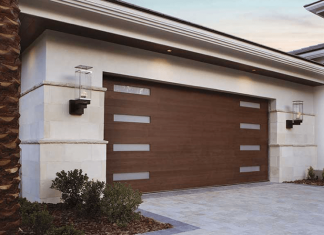Real estate investors often overlook fire-damaged properties, but they can provide lucrative investment opportunities for those willing to take on the work. The key is identifying properties with mostly cosmetic damage that can be repaired for a fraction of the ultimate property value. Thorough inspections and research are critical to discovering “diamonds in the rough” – properties behind the fire and smoke damage lie strong structural integrity and the potential for rebuilding profits. Recognising the unique potential in these cases, some investors specialise in strategies to buy fire-damaged houses, understanding that such investments can lead to substantial returns once the properties are restored and rejuvenated.
Evaluating Fire Property Investments
Structural and safety assessments
Before purchasing a fire-damaged property, detailed structural and safety assessments should be conducted to evaluate the feasibility and scope of repairs needed. Checking the foundational integrity, roof, load-bearing walls, and electrical systems will help determine if repairs are superficial or require major structural rebuilds. Hazmat inspections are also essential to check for asbestos and ensure the property is safe for workers during renovations.
Estimating repair and rehab costs
Itemising all repairs and hired work needed to rehab the property is key for setting budgets. Some repairs, like smoke removal and cleaning, may seem cosmetic but are extremely costly for large properties. Contingencies should be added in case further damage gets discovered during reconstruction. The total costs can then be compared to appraising the restored property’s market value to analyse the investment’s profit potential.
Researching post-disaster real estate market conditions
Studying the surrounding community and real estate trends post-disaster provides key insights into the restoration project’s exit strategy. Factors like localised housing demand, comparable property sales, and insurance rate shifts should be examined to strategise the optimal timing and pricing for the flip.
Financing Fire Rebuilds and Renovations
Insurance payouts
Many fire property deals leverage insurance payouts to help fund repairs. Investors must research what policy limits and claim eligibility exist around damage scopes. Most standard policies have smoke removal limits, so reviewing special restoration coverage is wise. Strategically timing the property transfer and working with adjusters helps maximise payouts.
Securing loans & alternative investor financing
Hard money loans and private financing groups specialise in funding rehabilitation projects, including fire restorations. The high-risk loans feature short terms and high rates but enable investors to fund purchases and repairs until they sell. Joining peer-to-peer property investment marketplaces also connects investors to alternative financing sources.
Finding Value in Smoke-Damaged Investments
Identifying cosmetic vs structural fire repairs
Fires create two types of property damage – cosmetic and structural. Cosmetic damage like soot, stench, and scorch marks on surfaces increases fire stigma but gets repaired fairly easily. Structural damage like foundation issues or burnt-out framing requires major rebuilds. Identifying cases where damage appears worse than it is uncovers profitable investments.
Uncovering “hidden gems” behind fire damage
Properties with minor structural damage but extensive cosmetic damage create value opportunities. Buyers can purchase at lower fire-stigma prices and implement targeted repairs to uncover beautiful hidden gems. These potentially high-value purchases get overlooked by buyers needing more fire restoration expertise.
Redeveloping Burnt Properties
Navigating permits and code upgrades
Burnt properties require extensive permitting for reconstruction. Working closely with local municipalities to navigate approvals helps streamline timelines. New code requirements around electrical, plumbing and kitchen ventilation may also apply to fire rebuilds. They understand the code upgrade costs needed to return critical data for budgeting.
Planning renovations and value-boosting upgrades
Crafting a property’s rebuild goes beyond repairing fire damage; investors can add renovations to boost value. Upgraded kitchens and bathrooms tailored to contemporary homebuyer preferences generate great resale appeal. Strategic cosmetic facelifts like new siding, decks or flooring open doors to sell at higher prices.
Repairing, Rebuilding, and Restoring
Hiring specialist contractors
Fire restoration requires speciality expertise across multiple trades. Reputable smoke removal companies reliably contain contamination. Rebuild contractors to remediate water damage and structural repairs thoroughly. Skilled craftsmen handle unique finishes restoration. Vetted teams streamline complicated projects.
Managing repairs for fire and water damage
Extensive water damage often compounds fire destruction from suppression efforts. Water leaks cause severe structural impacts if left untreated. Remediation requires removing affected materials quickly before dangerous mould and mildew spread. Project oversight is essential to coordinate appropriate water extraction, dehumidification, and repairs.
Budgeting for Fire Restoration Investments
Contingencies for smoke removal and decontamination
Smoke deeply permeates porous surfaces and ventilation systems, emitting harmful gases over time. Intensive cleaning and sealing protect indoor air quality. Expect added costs for third-party industrial hygienists to issue clearance reports to ensure homebuyer safety assurances.
Accounting for higher post-fire insurance premiums
Insurers view repaired fire properties as higher-risk investments, typically raising premiums. Modelling these elevated carrying costs into operational budgets provides better cost analysis. Alternatively, holding the asset under corporate entities with separate liability coverage helps shield personal premium spikes.
Maximising ROI Potential
Strategising the flip to maximise investment returns
Properly executed fire rehabs transform neighbourhood liabilities into gems with ample profit potential. Targeting purchase prices at significant discounts provides equity buffers. Managing efficient repairs and setting sales list prices anchored to comparable area sales facilitates profitable flips.
Overcoming Stigmas
Marketing effectively to sell fully restored properties
Fire-damaged properties carry heavy stigmas even after repairs, making sales challenging. Bright, welcoming photography spotlights redesigns. Marketing content focuses on rebuilding stories and feature upgrades. Home inspection reports and air quality clearances evidence safety. Curb appeal touches minimise visible exterior damage.
Investing Toward Future Resilience
Designing long-term durability into rebuilds
Reconstructing damaged properties fuels opportunities to strengthen building resilience. Upgraded insulation systems and impact-resistant siding improve structural integrity. Installing hurricane clips, corrosion-proof windows, and salt-tolerant landscaping boosts disaster-proneness. Taking preventative measures today alleviates future headaches.
Conclusion:
Behind smoke-charred rubble lie hidden gems poised for rebirth. For strategic investors, undervalued fire properties provide diamonds needing some polish. Evaluating which structures have intrinsic bones despite damage enables calculated risks. Meticulous analysis, insurance payouts, and refurbishment vision transform liabilities into profitable assets.
Persistent investors will reap the rewards from ashes. Mindfully rebuilding and upgrading from adversity fosters community resilience. Like the mythical phoenix, damaged neighbourhoods can arise stronger while investors realise returns. Vision and education uncover post-fire opportunities for win-win partnerships powering renaissance. Prudent assessments quantify risks and rewards, enabling confident pursuit of latent value in fire-ravaged buildings. The phoenix will rise again.
FAQs
What types of fire damage make a property a potential good investment?
The best fire property investments have mostly cosmetic damage like smoke staining or light surface charring that can be repaired fairly easily. Structurally sound properties with minor repairs often get overlooked despite their rehabilitation potential.
How can investors evaluate and budget for needed repairs?
Creating a comprehensive repair estimate involves hiring structural engineers, electricians, and contractors to assess foundation, wiring, and framing integrity and itemise rebuild needs. Contingencies should be added to cover undiscovered damage. Investors can compare total costs to potential resale values.
What financing options exist for fire property deals?
Insurance payouts can fund repairs, but policy limits apply. Hard money loans provide quick financing, albeit with high rates and short repayment terms. Peer-to-peer property investment marketplaces offer alternative investment sources.
How can stigma and risk be minimised when selling restored fire properties?
Providing past inspection reports evidencing repairs, air quality clearances, plus warranties on work done helps buyers feel more secure. Marketing should spotlight renovation outcomes over damage histories. Curb appeal improvements also help properties blend into neighbourhoods.
Why consider upgrading building materials during fire rebuilds?
Reconstructing damaged properties allows for resilience upgrades like mould-resistant drywall or waterproof building materials. Installing durable siding, fortified roofing, and other strengthening measures alleviate future storm, flood or disaster vulnerabilities.















